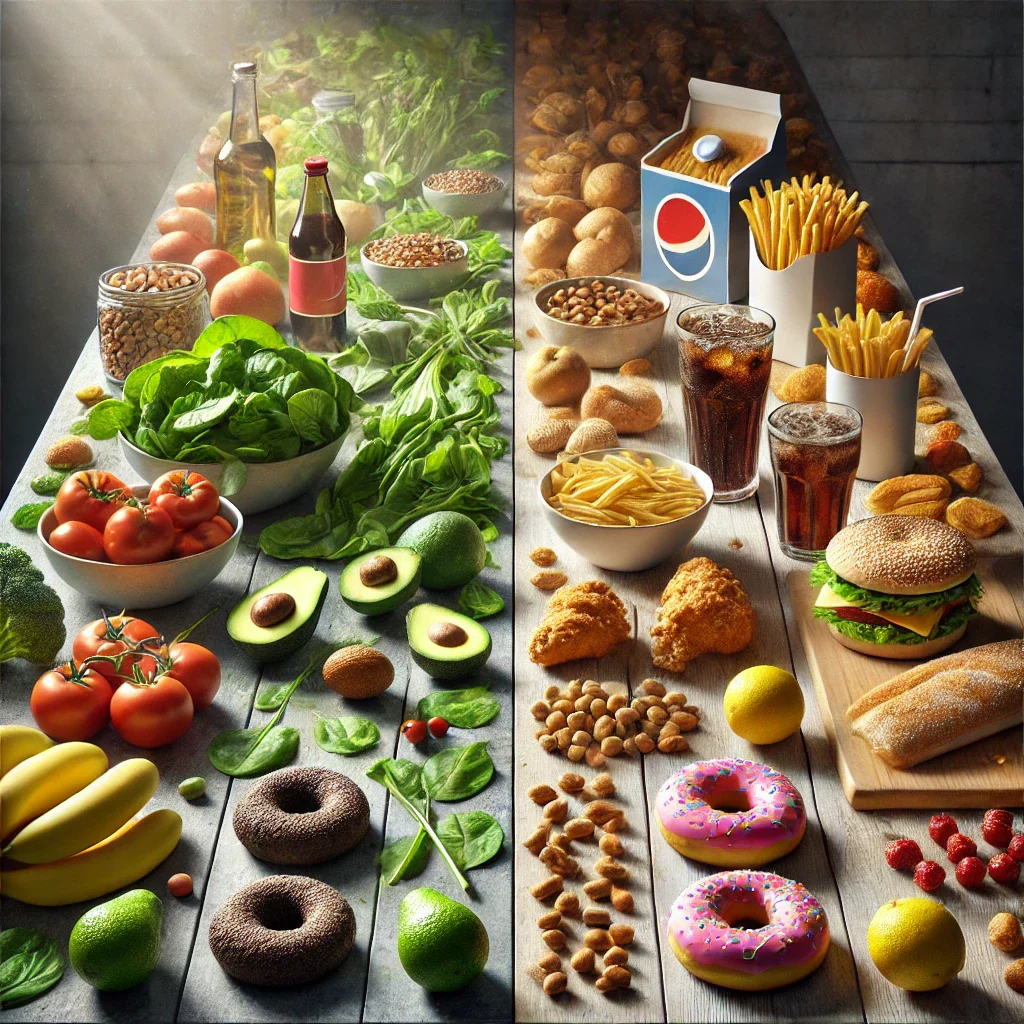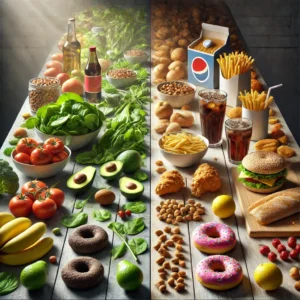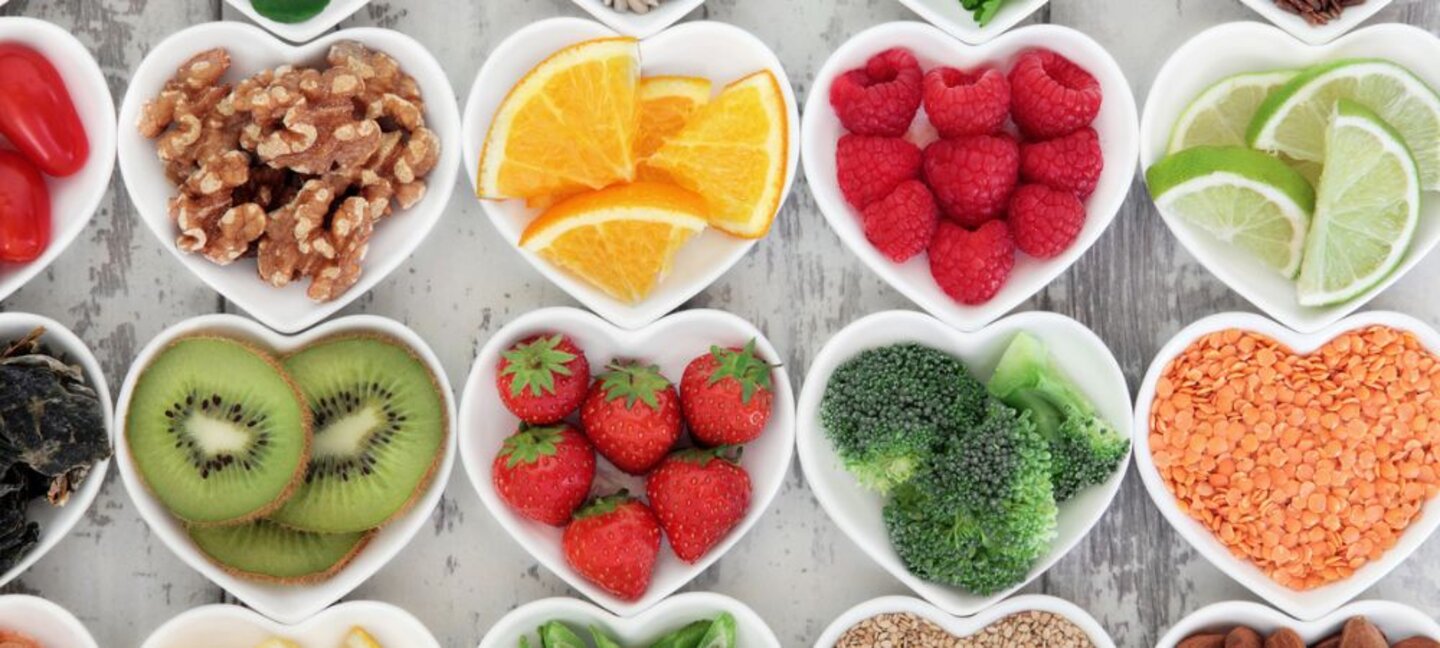Healthy Food and Unhealthy Food

Choosing between healthy food and unhealthy food significantly impacts your overall well-being. Understanding the difference between the two helps you make informed decisions that benefit your physical and mental health. This article delves into the nutritional differences, health benefits, risks, and examples of healthy foods and unhealthy foods, along with tips for making healthier food choices.
Key Takeaways
Healthy foods provide essential nutrients and support overall health.
Unhealthy foods often contain high levels of sugar, salt, and unhealthy fats, leading to various health issues.
Differentiating between healthy and unhealthy foods involves understanding nutritional labels and ingredient lists.
Making healthier food choices can significantly improve your physical and mental health.
Incorporating a variety of nutrient-dense foods into your diet ensures balanced nutrition.
What are Healthy and Unhealthy Foods?
Healthy foods are nutrient-dense, providing essential vitamins, minerals, and other nutrients that contribute to overall health. These foods include fruits, vegetables, whole grains, lean proteins, and healthy fats.
On the other hand, unhealthy foods, often referred to as junk foods, are typically high in calories but low in nutritional value. These foods often contain high levels of sugar, salt, and unhealthy fats, contributing to various health issues.
How Can You Differentiate Between Healthy and Unhealthy Foods?
Differentiating between healthy and unhealthy foods involves understanding their nutritional content. Key factors to consider include nutritional labels and ingredient lists. Healthy foods are characterized by whole, unprocessed ingredients and high levels of essential nutrients. Unhealthy foods are typically processed, with artificial additives and high levels of sugar, salt, and unhealthy fats.
Reading nutritional labels is essential. Healthy foods usually have fewer ingredients, and you can recognize most of them. In contrast, unhealthy foods often have long lists of unrecognizable ingredients. Another way to differentiate is by their caloric density; healthy foods typically offer more nutrients per calorie compared to unhealthy foods.
Read Also: Keep your face towards the sunshine and shadows will fall behind you
What is Healthy Food?
Healthy food refers to items that provide essential nutrients, supporting overall health and well-being. Examples of healthy foods include:
Fruits and Vegetables: Rich in vitamins, minerals, and fiber.
Whole Grains: Provide energy and fiber.
Lean Proteins: Essential for muscle recovery and growth.
Healthy Fats: Such as those found in avocados, nuts, and olive oil.
Healthy eating involves incorporating these foods into your diet to ensure you get a balanced intake of nutrients. For instance, a balanced meal might include a portion of lean protein, a serving of whole grains, and a variety of colorful vegetables.
 Fruits and Vegetables
Fruits and Vegetables
Fruits and vegetables are low in calories and high in nutrients. They provide essential vitamins and minerals, fiber, and antioxidants. Regular consumption of fruits and vegetables reduces the risk of chronic diseases like heart disease and cancer.
Whole Grains
Whole grains, such as brown rice, quinoa, and oats, are rich in fiber and other nutrients that play a role in regulating the digestive system and maintaining steady energy levels.
Lean Proteins
Lean proteins, including chicken breast, fish, tofu, and legumes, are essential for muscle repair and growth. They also help keep you full longer, reducing the overall calorie intake.
Healthy Fats
Healthy fats, found in foods like avocados, nuts, and olive oil, are crucial for brain health, reducing inflammation, and supporting heart health.
What is Junk Food?
Junk food is typically high in calories but low in nutritional value. These foods include processed snacks like chips and candy, fast food such as burgers and fries, and sugary drinks like sodas and energy drinks. Junk food is often linked to numerous health problems, including obesity, heart disease, and diabetes, due to its high levels of unhealthy fats, sugars, and salt.
Processed Snacks
Processed snacks are often high in salt, sugar, and unhealthy fats. These snacks can lead to overconsumption of calories and contribute to weight gain and other health issues.
Fast Food
Fast food is usually high in unhealthy fats, salt, and calories. Regular consumption of fast food is associated with an increased risk of obesity, heart disease, and diabetes.
Sugary Drinks
Sugary drinks, including sodas and energy drinks, are high in sugar and calories but offer little to no nutritional value. They can lead to weight gain and increase the risk of diabetes.
Watch Also: https://www.youtube.com/@TravelsofTheWorld24














Leave a Reply